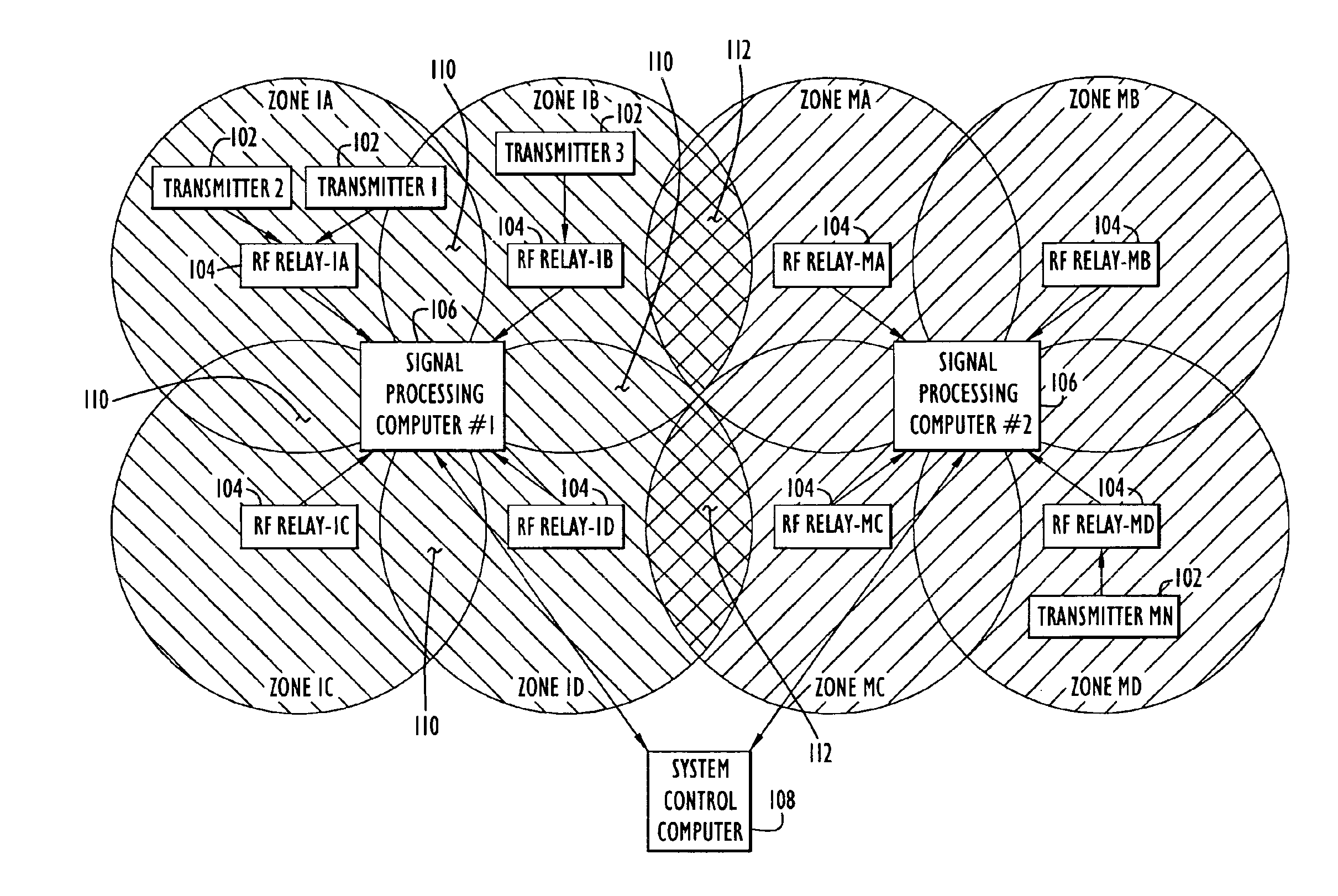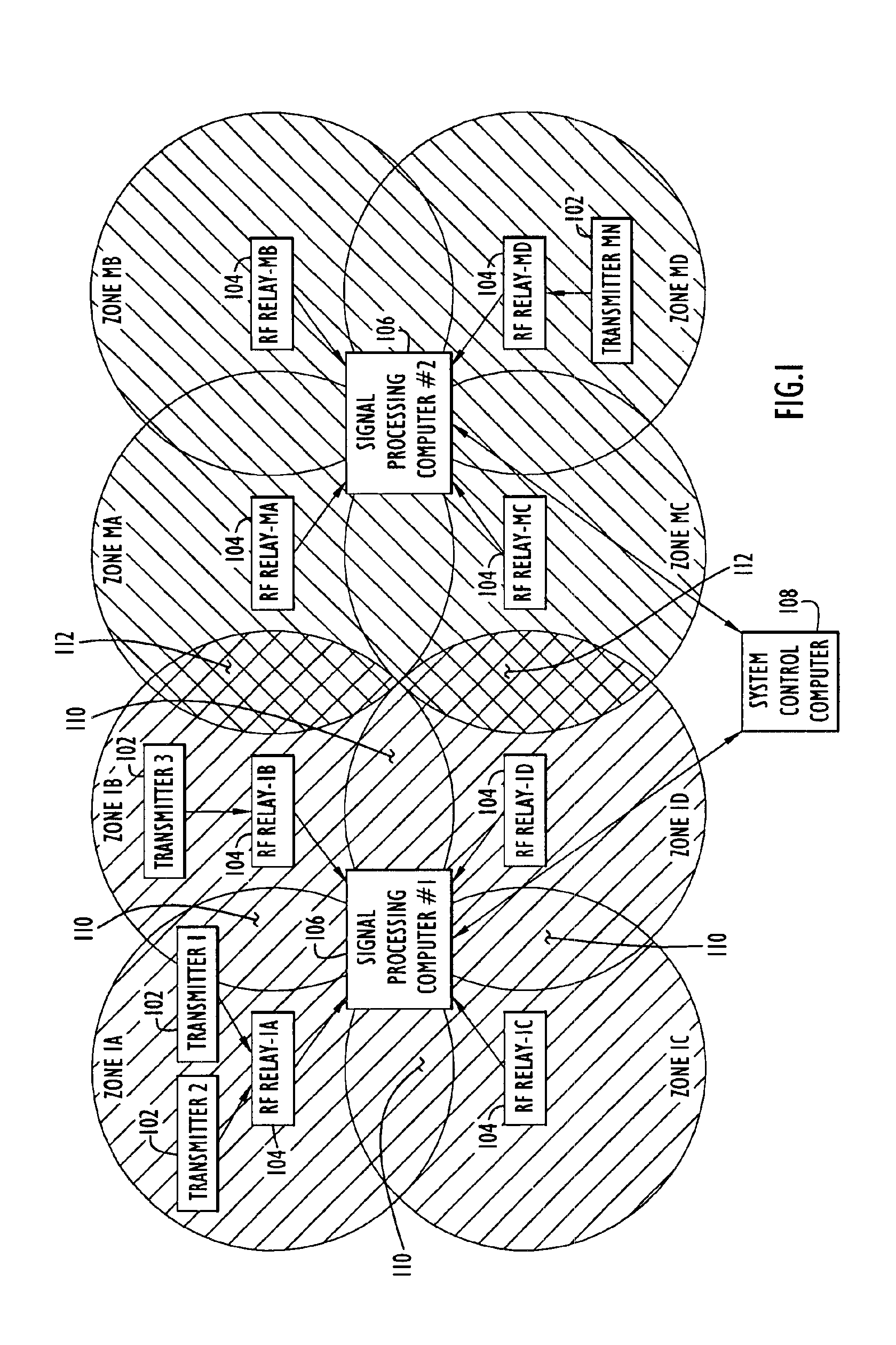Zone detection locator
a technology of locators and zones, applied in the direction of instruments, electric signalling details, signalling systems, etc., can solve the problems of increasing deployment and maintenance costs, reducing overall system reliability, and high total cost of deploying and maintaining such systems, so as to reduce the requirements of computer signal processing
- Summary
- Abstract
- Description
- Claims
- Application Information
AI Technical Summary
Benefits of technology
Problems solved by technology
Method used
Image
Examples
Embodiment Construction
[0033]Preferred embodiments according to the present invention are described below with reference to the above drawings, in which like reference numerals designate like components.
[0034]FIG. 1 presents a representative system architecture for a zone detection system that includes transportable, low-power, battery operated pseudonoise spread spectrum radio frequency (RF) transmitters 102, and distributed low-cost RF signal relays (or RF-relays)104, that receive signals from the respective transmitters and relay the received signals to one or more signal processing computers 106. The system further includes a system controller 108 that is used to integrate data received from the respective signal processing computers 106 and to provide a common user interface for the zone detection system.
[0035]For example, an RF transmitter 102 can be embedded in a wristband or badge and attached by a guardian to a child in a shopping mall. Should the child and guardian become separated, the location...
PUM
 Login to View More
Login to View More Abstract
Description
Claims
Application Information
 Login to View More
Login to View More - R&D
- Intellectual Property
- Life Sciences
- Materials
- Tech Scout
- Unparalleled Data Quality
- Higher Quality Content
- 60% Fewer Hallucinations
Browse by: Latest US Patents, China's latest patents, Technical Efficacy Thesaurus, Application Domain, Technology Topic, Popular Technical Reports.
© 2025 PatSnap. All rights reserved.Legal|Privacy policy|Modern Slavery Act Transparency Statement|Sitemap|About US| Contact US: help@patsnap.com



